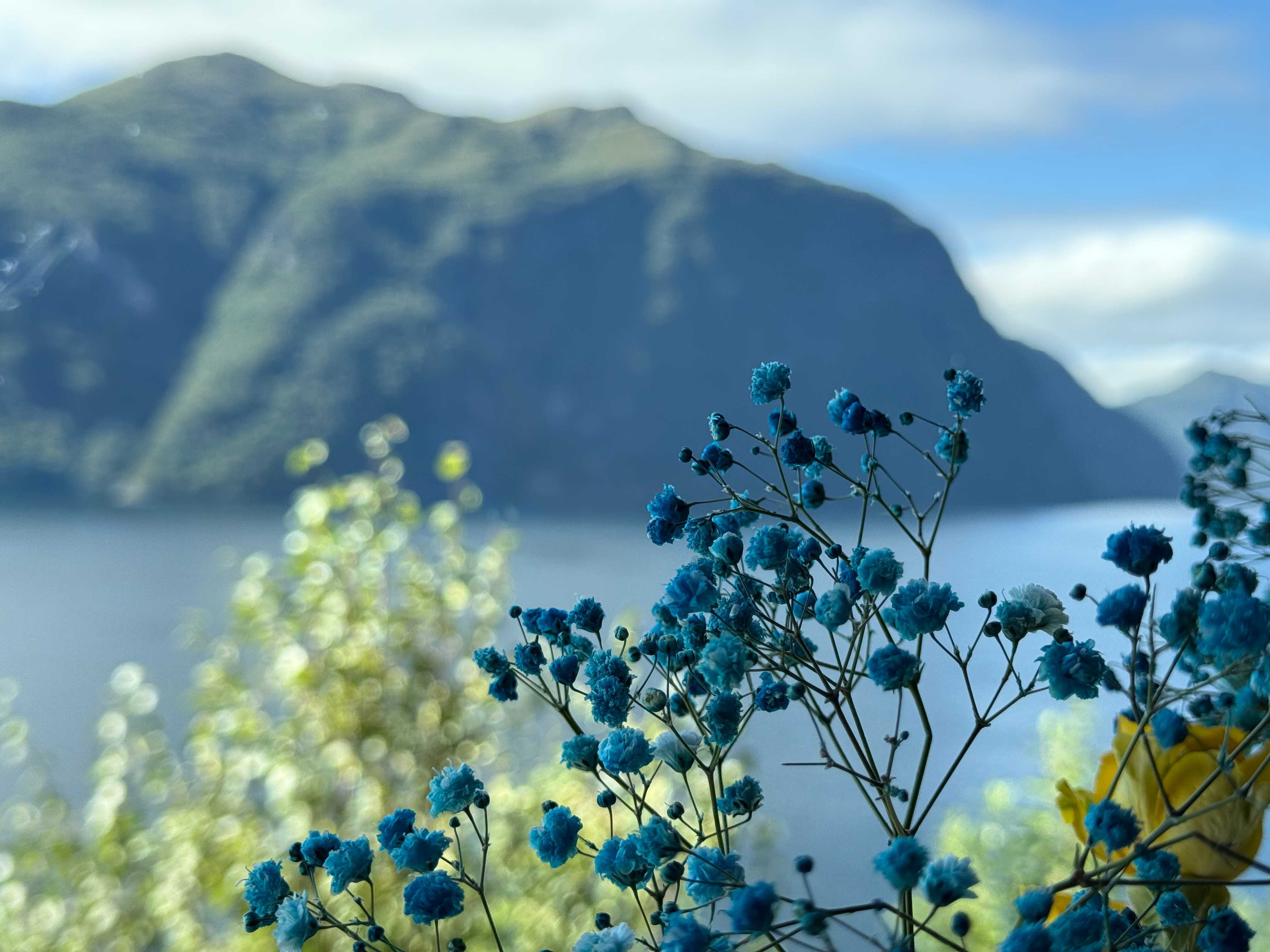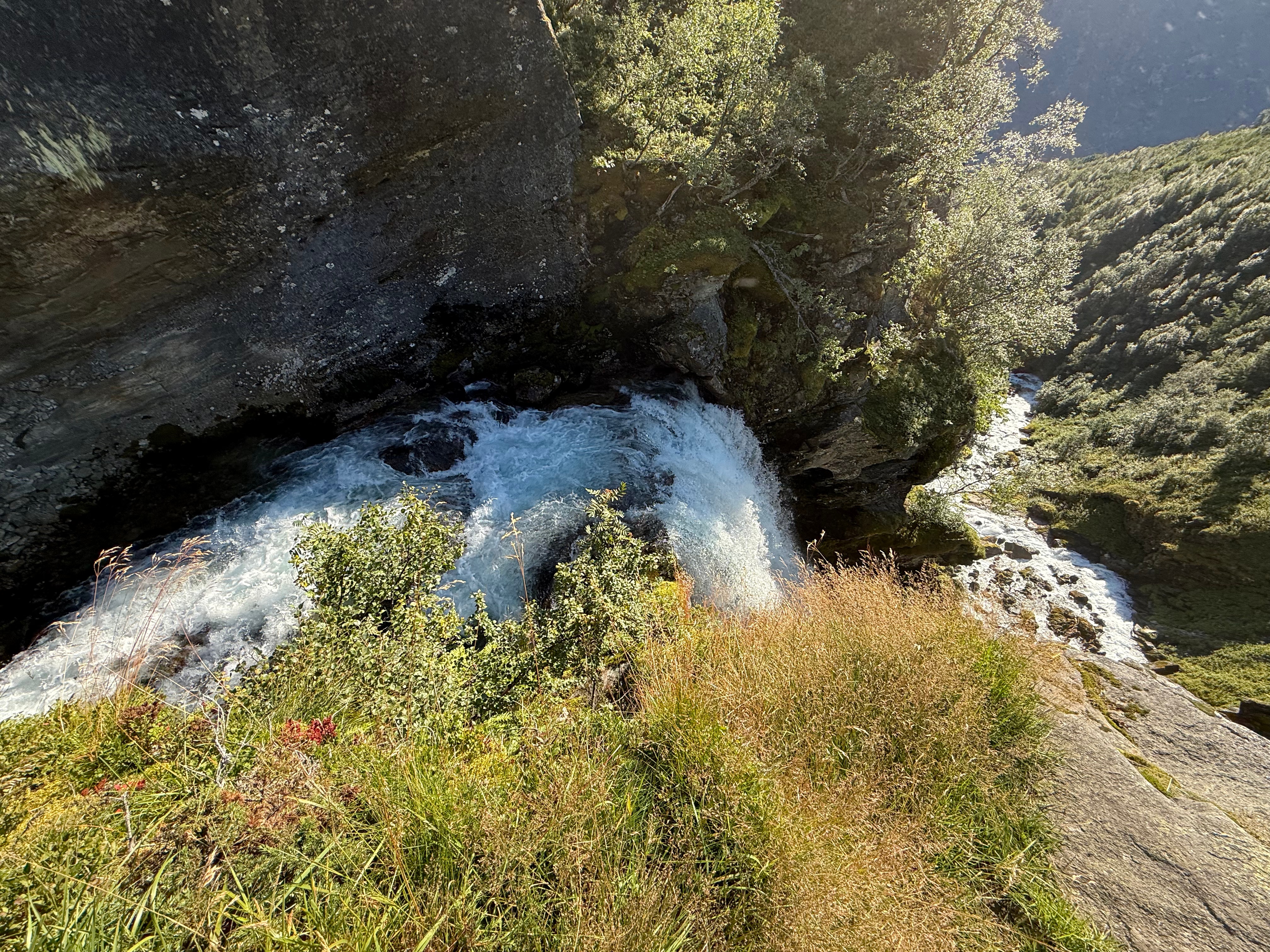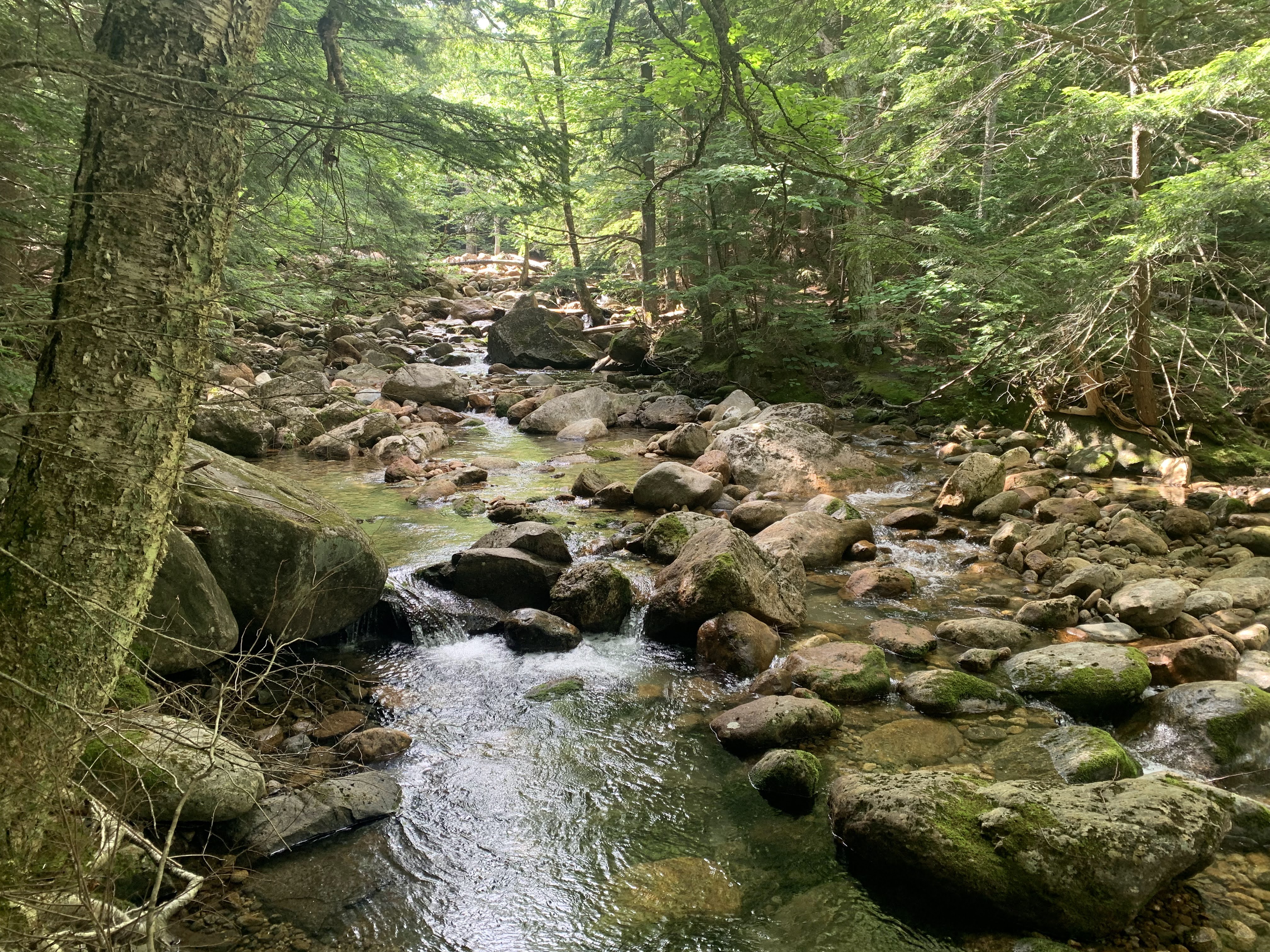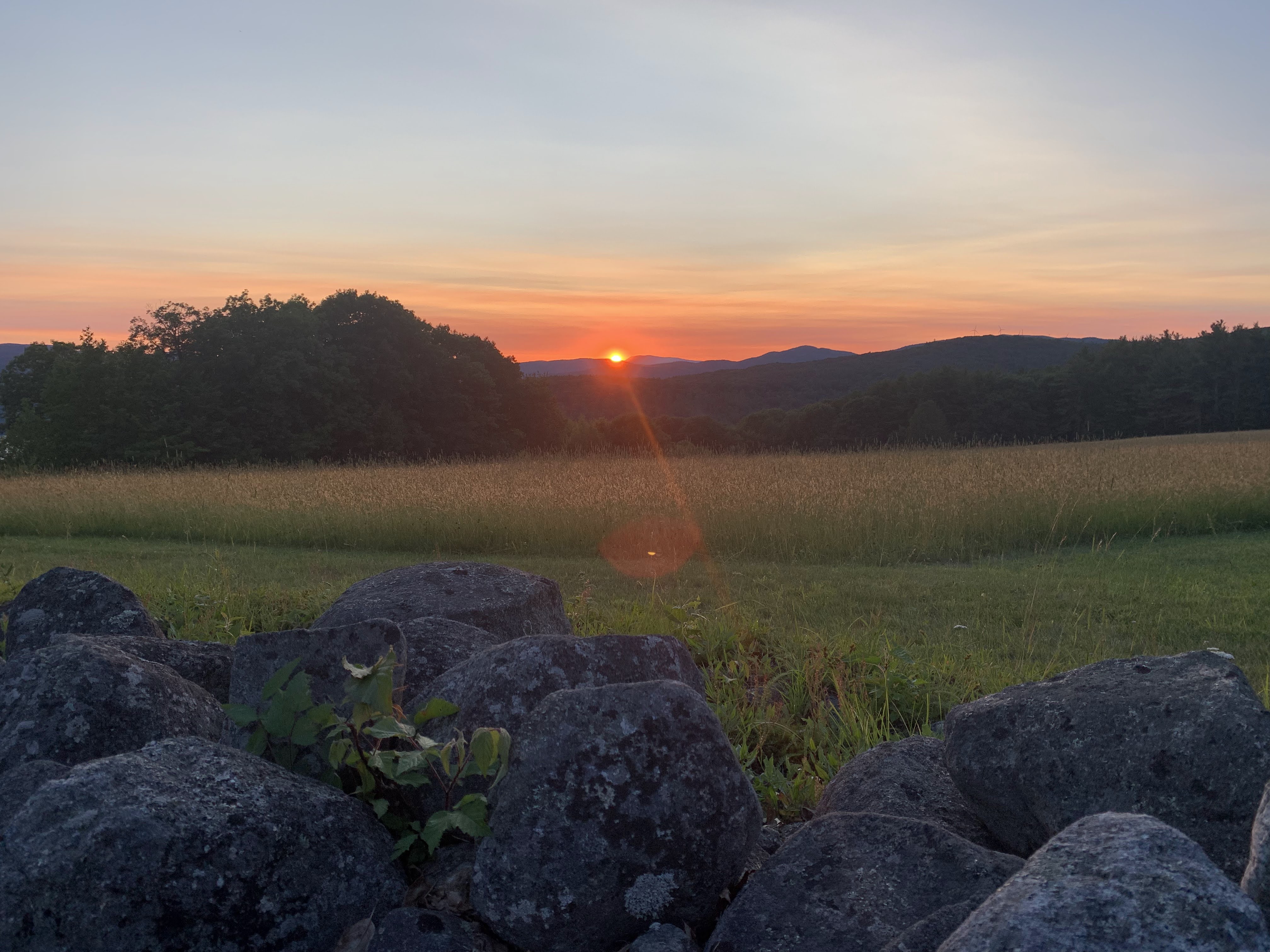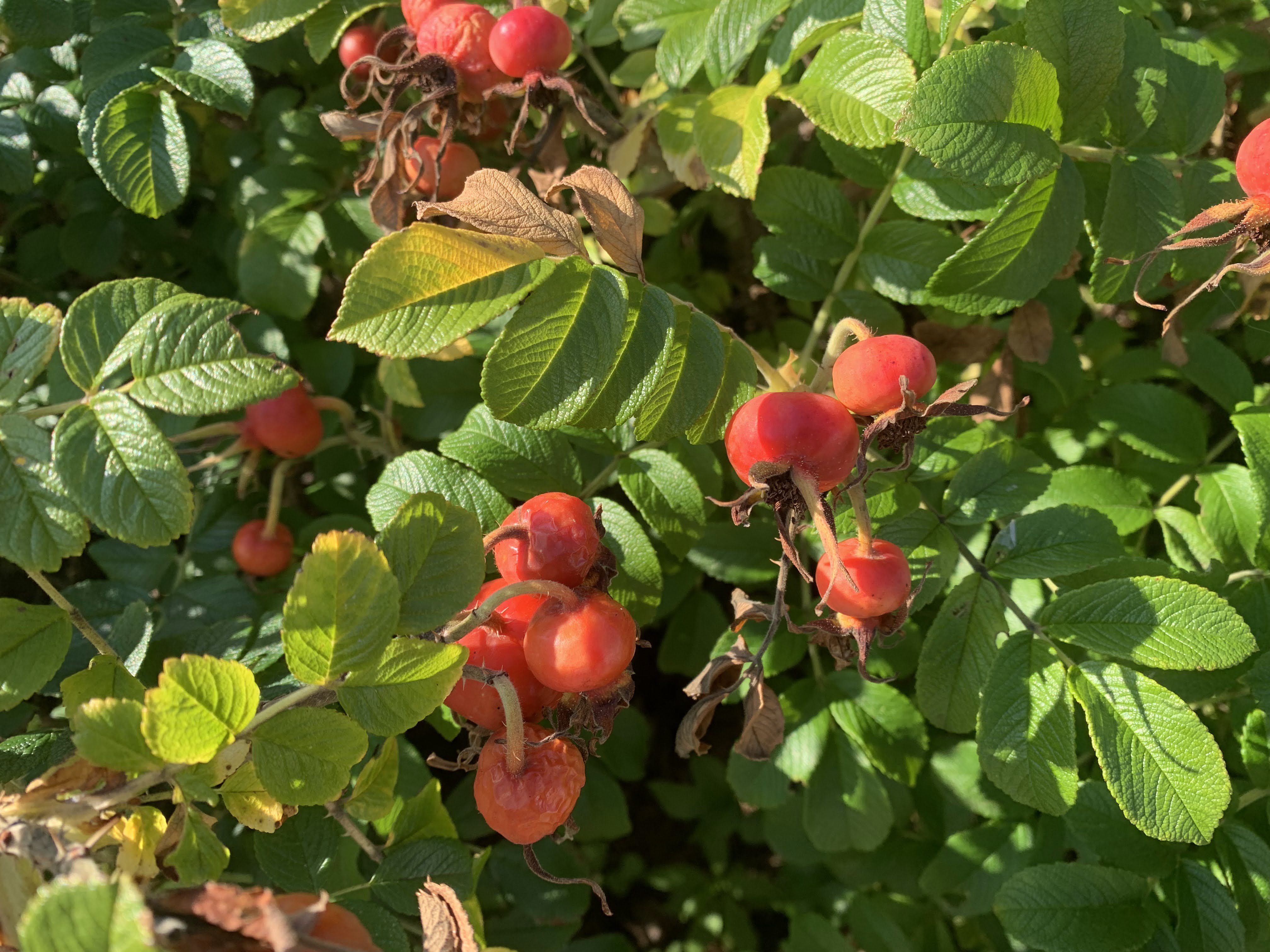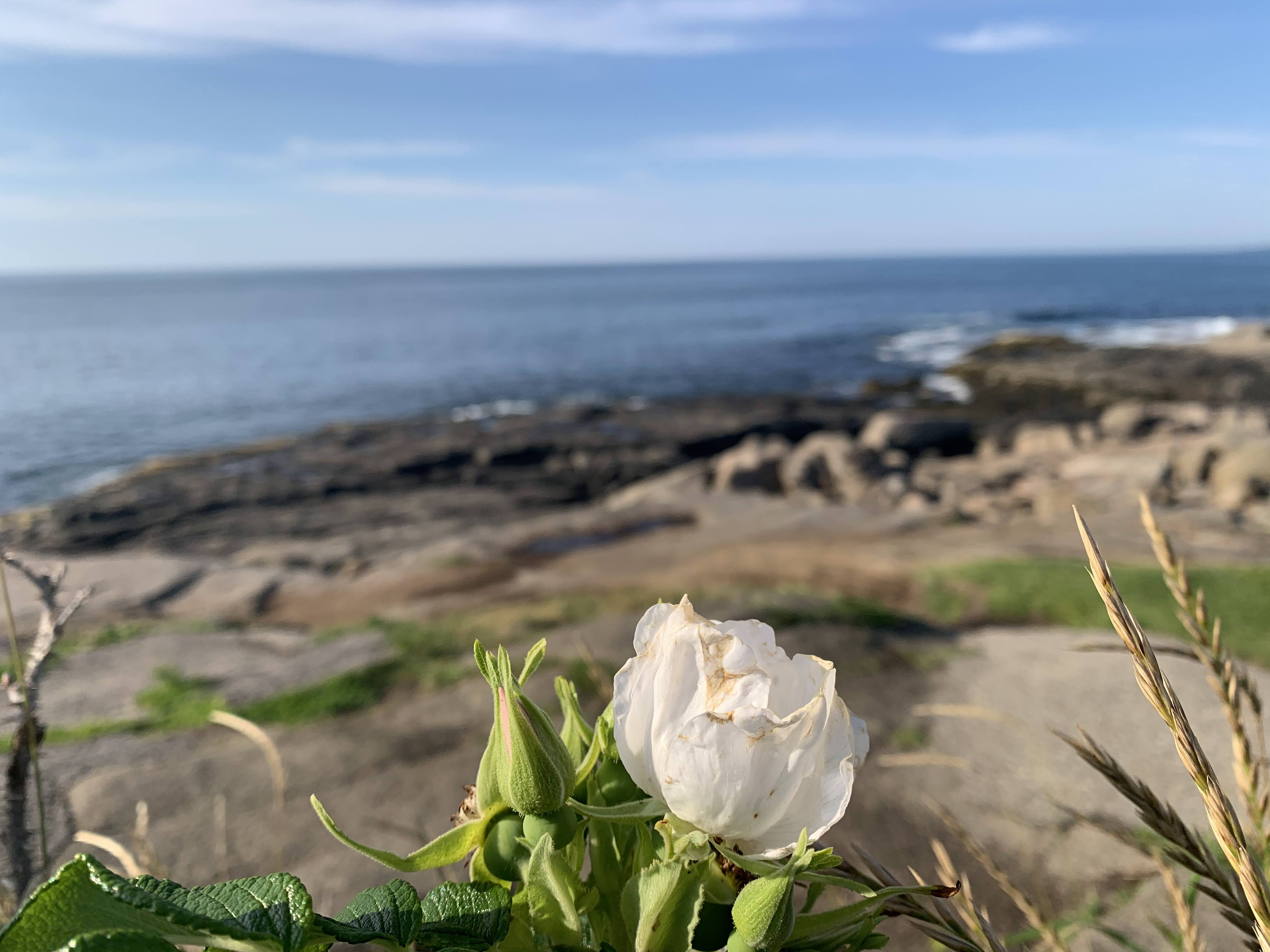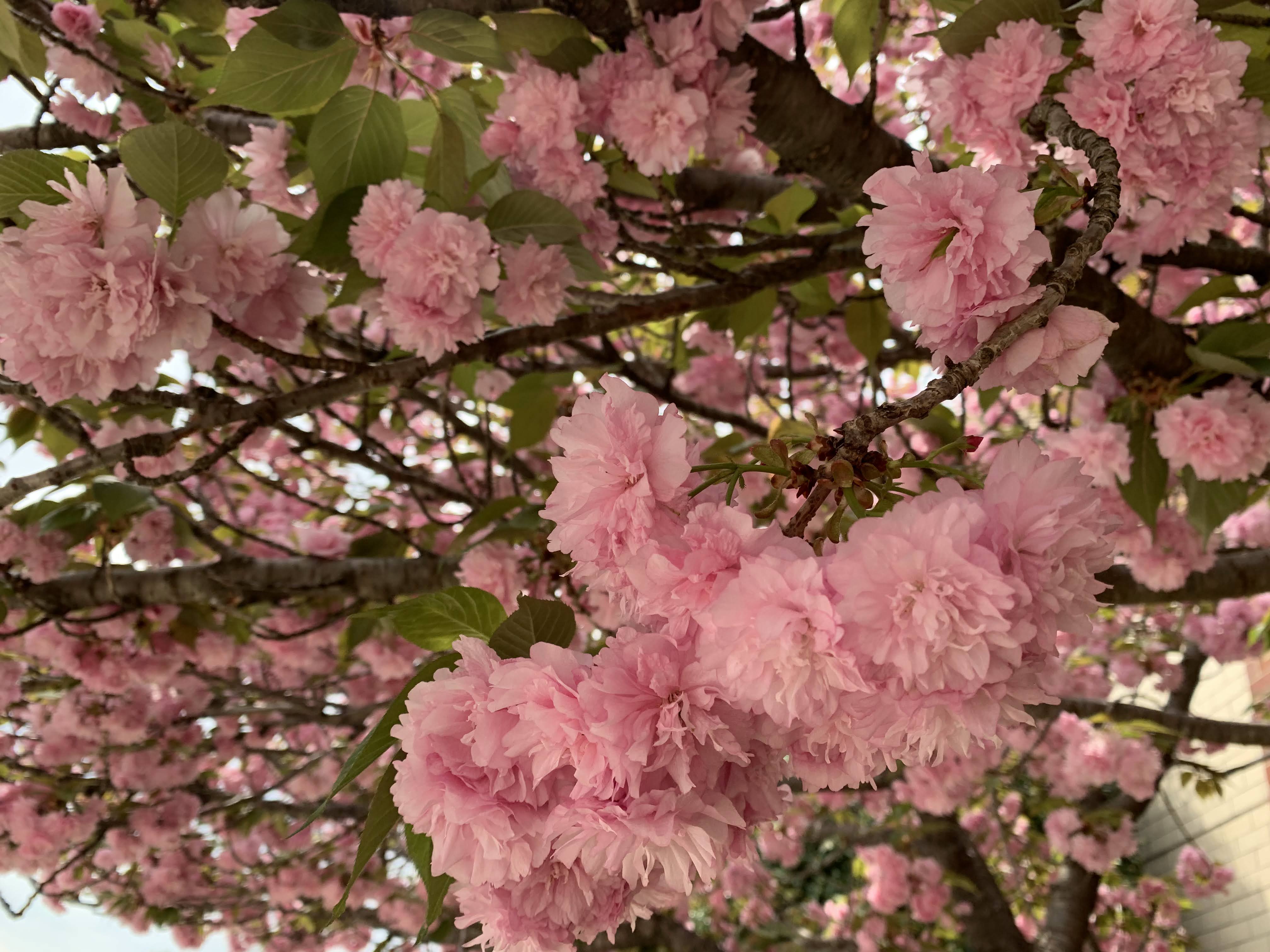

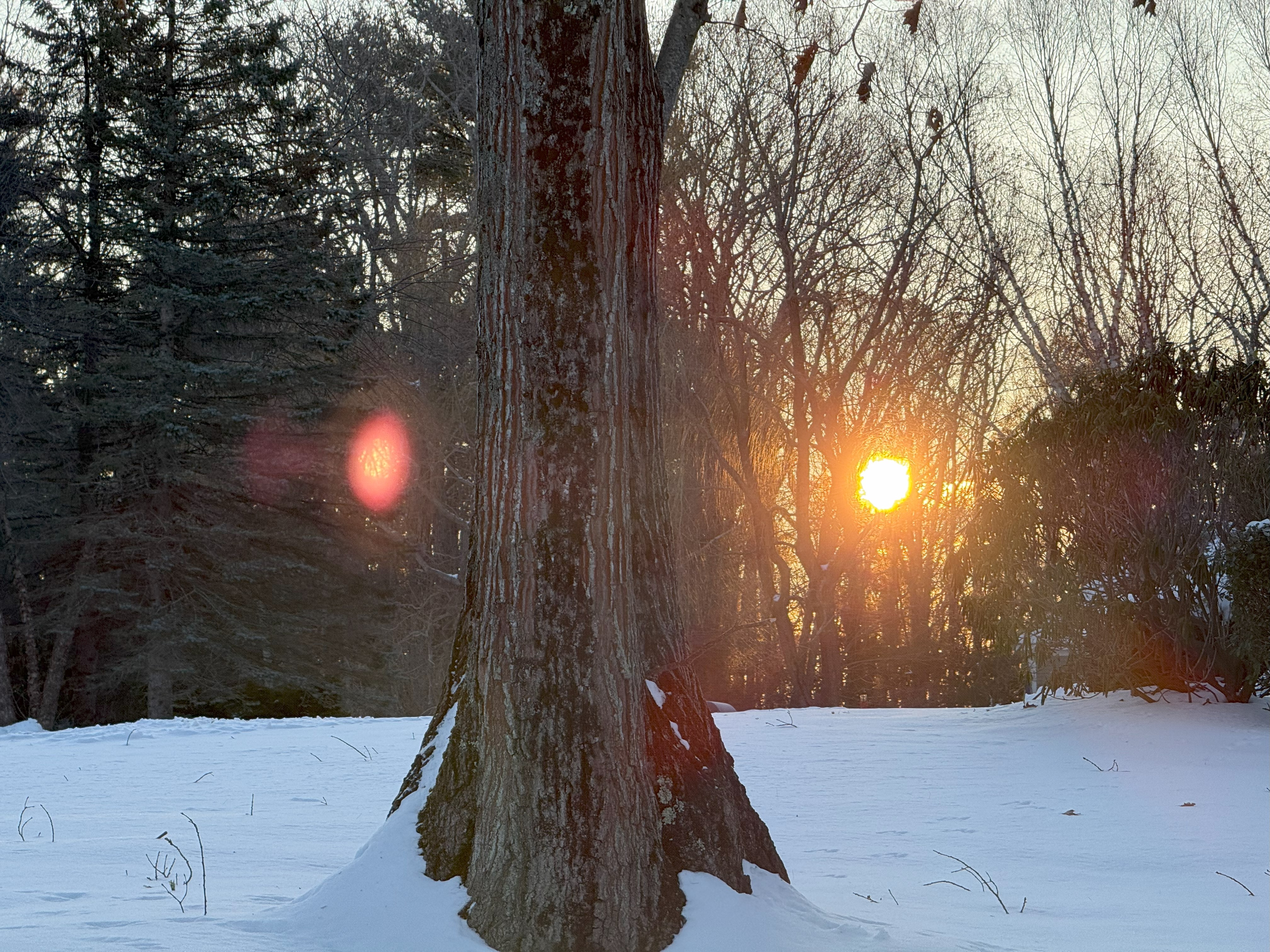
“The flat moorland at the fell top was a white immensity rolling away to the horizon with the sky pressing down like a dark blanket. I could see the farm down there in its hollow and it, too, looked different; small, remote, like a charcoal drawing against the hills bulking smooth and white beyond.” James Herriot, All Things Great and Small
After enjoying the PBS adaptation immensely, I dove into James Herriot’s book this past week and his adventures as a country vet in Yorkshire. How are British writers so, so good at describing their landscapes, both the grandeur and the hominess? And how can I do that in my writing?
New England shares plenty of features with Old England. We could give Yorkshire a run for its money in winter cold and snow right now. But instead of great fells and hilltops, we have the ocean, which turns gray-blue in the cold, swallows up the falling snow, and chills bone and flesh. As I read Herriot’s book, I’m struck by the role of light and fire in both places. Warm hearthfires, blazing lighthouses, and lit Christmas trees bring coziness and delight out of winter’s chill.
Zechariah: The LORD Remembers
Last year, I spent some of December studying one of my favorite moments of the Christmas story: Zechariah’s prophecy over John the Baptist in Luke 1:67-80. Like all of Luke, every word and phrase of this passage thunders with meaning. I return to it this year with fresh wonder. Here are a few of the insights that delighted me:
- Fulfillment of prophecy — I did some research into the 400 “years of silence” between the last book of the Old Testament, Malachi, and the birth of Jesus. When Gabriel appears to Zechariah in Luke 1:13-17, he’s quoting Malachi, the last prophet. It’s as if Gabriel is breaking the silence and saying half time is over; salvation is on its way, as promised, heralded by one who comes “in the spirit and power of Elijah.”
- Silence — The four centuries of silence between Malachi and the Incarnation are echoed in Zechariah’s muteness when he asks Gabriel for a sign. The Lord was silent for about 400 years; Zechariah was silent for nine months before he spoke at the birth of his son, praising God for remembering His promises.
- Names — Every name in Luke 1 means something important, but Zechariah’s surprised me the most: “the LORD remembers.” Zechariah, Mary, and Elizabeth are all awestruck by the Lord’s remembrance of His promises to Israel.
- Spiritual enemies — Zechariah mentions three times that God will save the Jews from their enemies or “those who hate us.” This confused me slightly because the Lord Jesus did not deliver the Jews from their enemies, the Romans, during His lifetime; in fact, the temple was destroyed and Jerusalem decimated in 70 AD. After more study, I concluded that Zechariah is speaking, in the Spirit, about spiritual enemies: sin and death. Physical enemies like horsemen and chariots, vast armies and plagues were never the real issue in the Old Testament. The all-powerful God overcomes those easily. It was spiritual enemies that were the real problem: the rebellious hearts of the Israelities, the sins they fell into again and again. By dying for our sins and calling us to become children of God, Jesus defeated those spiritual enemies and raised up a horn of salvation.
Hildebrand and the Forms of Beauty and Ugliness
This Christmas season, I’m also reminded of one of the first seminars I attended in grad school that focused on the work of Dietrich von Hildebrand. Hildebrand was an aesthetic philosopher and theologian whose work was only recently translated into English (2016). He studied in Germany, had to flee in 1933 because he was on the Nazis’ hit list, and ended up at Fordham University in the United States. His work on theological aesthetics, or the study of beauty as it relates to God and His work, is rich and deep and clear, like a river overflowing with melted snow.
Digging through my five-year-old-notes, I remember that Hildebrand argued that beauty has a profound role in shaping the human heart, guiding people towards other people and the divine. He argued that beauty possesses a spiritual plenitude, an abundance that works on us without our knowledge. I especially loved the part of the seminar reading where categorized some of the forms of beauty and ugliness and their spiritual implications:
- The prosaic — Hildebrand says that a “dull, gray, depressing atmosphere is the uttermost antithesis of all that is brilliant and festive, of all that is abundant.” The prosaic is a form of ugliness like that of an office building or a factory.
- The sensational and the exciting — He calls this the “false antithesis to the prosaic” and gives Roman circuses, horse races, and boxing matches as examples. The sensational and exciting are a “false antithesis” because they try to relieve the boredom of the prosaic, but they don’t work in the long-term.
- I remember talking about nightclubs with a friend years ago. “Why on earth do people want to go to them?” I asked her. “I think that if you work in an office all day,” she said, “you’re just trying to do something that makes you feel alive.”
- Festive — One antithesis to the prosaic is the festive, or beauty that is free from work, free for enjoyment, splendid and luminous; think of Sabbath, holidays, and festivals.
- Fantastic — Hildebrand calls this “the unreal world in which the classic structure of the cosmos is abolished.” This is the world of fairy tales, jack-o-lanterns, brownies, and dwarves.
- Poetic — The poetic is the true antithesis to the prosaic, the “primordial element” in all arts, “a profound source of joy.” The poetic, according to Hildebrand, is the beauty of a rose, hyacinth, lily, or the area around Florence.
He discusses more categories — the flat, cheap, shallow, philistine, bourgeois, mediocre, and sentimental — but those ones especially stuck with me.
The Christmas season overflows with poetic and festive beauty: moonlight on fresh snow; trees decorated in gold and scarlet, silver and blue; red holly berries; abundant wreaths; candles in windows. But the mediocre and sentimental show up as well in tawdry blow-up Santas, bright plastic Yankee swap gifts, glaring multicloud lights, and certain movies that try too hard to be heartwarming and feel-good.
At best, Christmas is festal (I love that word). It reflects the kingly joy, joviality, wonder, merriment, and mystery of the Incarnation, the God who came in the flesh to bring light to our darkness.
Psalm 89:15-16 (ESV)
Blessed are the people who know the festal shout,
who walk, O LORD, in the light of your face,
who exult in your name all the day
and in your righteousness are exalted.
Everyone knows how easy it is to lose the purpose of this season in all the wrapping paper, jingling bells, colored lights, scented candles, iced sugar cookies, and overwhelm. Real beauty, the quiet and exultant splendor of Jesus’s birth, doesn’t exhaust or oversaturate us the way that the more tacky aspects of Christmas decor or media can. As Hildegard pointed out, true beauty glorifies God and points back to him.
How Do You Write About Your Life Without Romanticizing It?
Ponderings on Christmas and beauty led me to another big question. A few months ago, I pondered how vulnerable you should be on the internet. Now I wonder: how do writers like me who love concrete details, vivid descriptions, and good stories write about our lives without romanticizing them?
Ugliness is oppressive. We all have to spend some time in the prosaic world of the DMV, waiting rooms, and underground parking garages or the mediocre, flat, cheap, or shallow artwork of poorly-designed offices or lobbies. I’m tempted to pretend things like dull fluorescent lights, shades of gray, cracked cement, the smell of cigarettes, and the blare of car horns dont exist, screen them from my writing, and just focus on the beauty that is everywhere.
I have a friend who visited Venice last year. When I asked what it was like, she described the canals and houses in their beauty. But there was another detail: the bells. “They were ringing all the time,” she said wearily. “Day and night.”
I couldn’t help laughing. Put a writer like me in Venice, and we’d be tempted to wax poetic about how the air of Venice rang with church bells to remind people of the mysteries of time and immortality, connecting heaven and earth, calling people to joy and repentance . . . we could make quite a romantic picture. But my friend pointed out the plain fact: bells ringing all the time are very annoying. Both are true.
So how do you reconcile the romantic and unromantic parts of your life in the kind of essay and story writing I love? How do you balance honesty about the prosaic, flat, cheap, shallow, bourgeois, and philistine (to use some of Hildebrand’s categories) while recognizing the poetic, festive, and fantastic wonders in the world God made?
James Herriot’s All Things Great and Small is a great example of one approach. Herriot profiles the ugly and the beautiful, the mundane and the charming, the disgusting and the lovely alongside each other to create a deeply honest and loving picture of the town of Darrowby. Farms may be perched on lush, grassy hillsides under clear skies, but they also contain animals, and all the unhygienic and unsanitary things animals do, especially when they’re sick. If he left out the unpleasant parts of being a country vet, his book would ring hollow. The real story is more fascinating and ultimately more beautiful than the cleaned-up version.
This question doesn’t have one easy answer, but here are some thoughts I came away with:
- The full picture — Every personal anecdote inevitably has ugly, boring, or sad details in it. While drafting a piece, I can list those alongside the beautiful ones to ponder what the experience was really like. The mundane and the magical will likely combine into a much more interesting and honest story than the cleaned-up version.
- The point — Each piece of creative nonfiction will have some kind of metanarrative, emphasis, or pattern; every writer selects and arranges details to make a point. What details serve your point? And as my writing teacher Johnathan Rogers often says, how can you love your reader in deciding what to include? Herriot includes some details of surgeries, births, and sicknesses in his book (fair warning), but they never feel gratuitous or unnecessary to me.
- The temptation — I have to ask myself: why do I want to romanticize my stories? Why do I want to focus on the beautiful? Part of it is simple: I love beauty. But I’m also tempted to leave out parts of the story that don’t fit the identity I want for myself: an adventurous person who lives a glamorous intellectual life and doesn’t make mistakes. Again, Herriot’s book is a good contrast there; his stories showcase many mistakes and mishaps that made him look foolish, and his self-deprecating humor about them is delightful. It’s a gift to his reader.
The birth of Jesus had mundane and ugly aspects as well as beautiful ones. Christ was born to impoverished parents in a stable and hunted by a ruthless king who murdered boys of his age in Bethlehem. It is, after all, part of glory of the Incarnation that it happened during the darkness of a ruthless Roman empire, a cruel king like Herod, in a world of dust, dirt, straw, and blood. The real story is far more glorious than any romanticized version could be.






